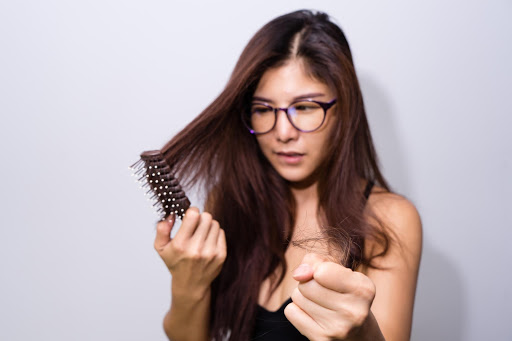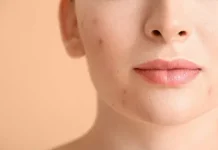According to the American Academy of Dermatology, most people lose 50 to 100 hair strands each day. Hair loss, hair thinning, and pattern baldness are not only a nuisance for men; in fact, many women also encounter the challenge of hair loss. While the tragedy mostly hits middle-aged women, hair loss can occur at any age.
Hair loss is a setback for women; it shatters their self-confidence. It is devastating to see your hairline receding every day. Whether you are a man or woman, losing hair is no joke. However, you cannot control the damage and reverse hair loss without understanding its root causes.
The Hair Growth Cycle
Have you ever wondered if there is a science behind hair growth? It is a complete cycle with three different stages. Understanding the hair growth cycle will help you understand the causes of hair loss more clearly.
1. Anagen –The Growth Phase
Anagen is the first phase of hair growth; at this stage, your hair grows at a rate of 1 cm per month. How long your hair stays in the anagen phase depends on your genes. Usually, it can last anywhere between 3 and 5 years. The duration of the phase also tells how long your hair can grow. 85-90% of the hair is in the growth phase at any given time.
1. Catagen –The Transition Phase
It is the transition phase, which lasts for 2 weeks. At this stage, the hair follicles prepare to grow new hair. During the transition, the follicles shrink to one-sixth of its original size. It is during this phase that the hair follicles “die” and fall out.
1. Telogen –The Resting/Shedding Phase
This is the final stage where the hair follicles remain at rest. The telogen phase lasts anywhere between 1 and 4 months. At any given time, 10-15% of the hair follicles are in the resting phase. By the end of this phase, hair follicles begin to regenerate new hair, pushing out the old hair. As a result, the old hair is shed from the head. As you can imagine, individuals whose hair spends the majority of its life in the telogen phase will be those who experience balding and thinning.
Factors responsible for Hair Loss among Women
Women can experience hair thinning or hair loss due to many reasons, including stress, hormonal change, certain medications, and alopecia. Let’s discuss each of the “culprits” in detail.
- Androgenetic Alopecia
Alopecia or pattern baldness is the leading cause of hair loss in both men and women. While it’s a permanent condition, the effect differs between males and females. Men with pattern baldness lose hair from the top and front of their heads. Women, on the other hand, experience hair thinning on the top and crown of their heads. Alopecia is the biggest genetic cause of hair loss. It is a by-product of a combination of genetics and a hormone called DHT.
- Genes
Your genes play a major role in hair thinning or hair loss. A study shows that nearly 287 genetic regions lead to alopecia. Your dermatologist will check your family history and will ask you about hair loss trends in the family.
The doctor uses a magnification on the scalp to see if a woman’s hair follicles vary in size –having some thick and some thin hair is a sign of female pattern hair loss. Based on statistics from the America Academy of Dermatology, genetic-influenced hair loss affects more than 30 million women in the US.
- Medical Conditions
Women with uniform hair follicles can also fall victim to hair loss. You are likely to experience sudden hair fall due to certain medical conditions. While there are many conditions that can contribute to hair loss in women, some common conditions include anemia, pregnancy, and thyroid disorders.
In addition, polycystic ovary syndrome (PCOS), autoimmune diseases, and certain skin conditions also lead to hair thinning and hair loss. The list does not end here; iron deficiency, diabetes, eating disorders, and lupus also affect hair growth.
However, hair loss in such cases lasts for a couple of weeks to six months. Treatment of the condition helps in reversing hair loss as well.
- Medications
Hair loss is one of the adverse effects of certain medications and treatments. These medicines can disrupt the hair growth cycle, leading to two types of hair loss –anagen effluvium and telogen effluvium. Hair loss in telogen weakens the hair follicles, leading them to the resting phase.
In this phase, hair strands begin to fall out, eventually leading to pattern baldness. Blood thinners, birth control pills, and medicines for controlling blood pressure are some medications that contribute to telogen effluvium.
- Stress
Extreme stress, intense illness, and physical trauma can also lead to hair recession. When you are dealing with emotional or physical distress, you may also encounter severe hair thinning. Stress forces hair follicles into the resting phase. As a result, more hair strands fall out than are produced.
Many people neglect their diet when they are in a stressful situation. Poor dietary habits work as a catalyst and fuel the hair loss. Lack of nutrients, particularly proteins in the diet causes ferritin deficiency. Protein supports hair growth. Hair loss due to stress is reversible and stops after several months.
- Traction Alopecia
Women put a lot of effort into styling their hair. From cornrows and tight braids, dyes, and chemical treatments, to flat irons and blow dryers, the list is long. In case you don’t know, self-inflicted hairstyles, such as tight braids, can cause traction alopecia, a type of hair loss.
Enthusiastic hair brushing, aggressively drying wet hair with a towel or blow dryer, and heat styling wet hair can damage and break hair follicles. However, hair loss due to these issues is reversible with medical treatments. It is better to avoid shampoos that contain sulfate, sodium chloride, and parabens.
Treatment
In the case of alopecia or pattern balding, you can opt for Low-Level Light Therapy (LLLT). It is a non-invasive, non-chemical treatment for women and men. LLLT is a scientifically studied treatment for promoting hair growth.
Low-level light therapy is one of the top treatments used to reverse or slow down androgenetic alopecia. Devices that emit this light therapy have made their way into the hair loss industry with the evolution of technology. These devices are a hair growth cap that are worn in the comfort of your own home every other day for 30-minutes. They have been scientifically proven to regrow the hair follicles on the scalp by stimulating blood flow and encouraging new cell growth in problematic areas. Users will typically see new hair growth results in 4-8 months of religious use. Laser caps are relatively affordable and are FDA-cleared to be safe and effective.
Recap
Hair loss among women can be terribly life altering. Fortunately, many causes of hair loss can be cured with the appropriate treatment. Make sure you are staying properly nourished and that you are taking care of your existing, healthy hair strands. Also, make sure you are staying educated about what potential causes might be contributing to your hair thinning. This way you will be able to easily pinpoint a solution to get your hair back on track!








